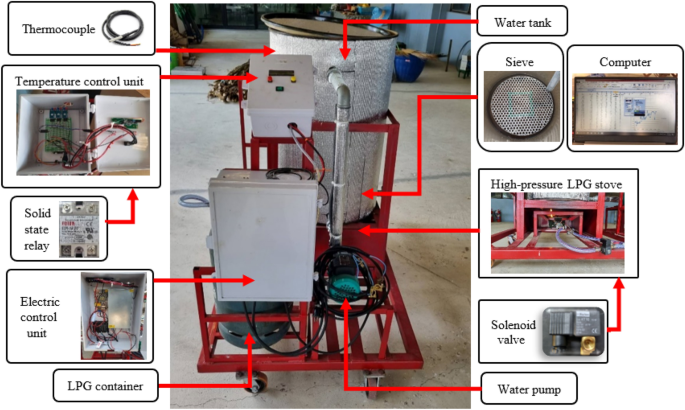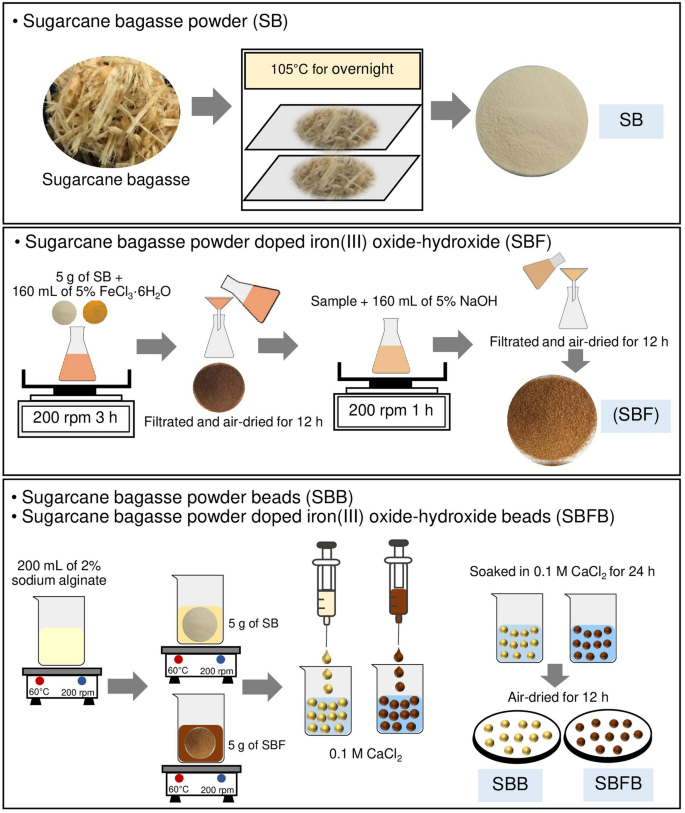Are Products From Sugarcane Truly Biodegradable?
Unlocking the Potential of Products From Sugarcane: a Comprehensive Guide
The potential of sugarcane extends far past its standard use for sugar production. This guide discovers the multifaceted applications of sugarcane, from power and eco-friendly products to wellness items. By analyzing its journey from field to manufacturing facility, it discloses exactly how sustainable practices can transform waste right into beneficial sources. As sectors seek environment-friendly services, the concern continues to be: just how can these innovations reshape our strategy to farming and manufacturing?

The Journey of Sugarcane: From Area to Factory
Sugarcane undergoes an interesting transformation as it takes a trip from lush areas to busy manufacturing facilities. In the areas, the tall, environment-friendly stalks are collected, commonly by mechanical means or manual work. When cut, the sugarcane is quickly moved to refining facilities to ensure maximum freshness. At the manufacturing facility, the first step involves crushing the cane to draw out the pleasant juice, which contains sucrose. Products From Sugarcane. This juice is after that filteringed system and clarified, removing impurities. Following this, it undertakes dissipation to focus the sugar material, bring about crystallization. The resulting sugar crystals are separated from the remaining molasses via centrifugation. The sugar is dried and packaged for distribution. Throughout this journey, maintaining high quality and effectiveness is necessary, as the approaches employed straight effect the item's last high quality. This makeover not just highlights the agricultural significance of sugarcane however additionally its considerable function in the global economy
Sugar and Its By-products: More Than Simply Sweet taste
The makeover of sugarcane into refined sugar opens up the door to a large selection of items and applications that expand past mere sweet taste. Sugar and its derivatives, such as molasses, brownish sugar, and sugar, play essential functions in different markets, consisting of food, drugs, and cosmetics. In the food sector, these ingredients enhance flavors, improve texture, and serve as preservatives.Molasses, a by-product of sugar production, is rich in minerals and vitamins, making it a beneficial active ingredient in natural food and animal feed. Glucose, an easy sugar stemmed from sugarcane, acts as a considerable energy resource in sports nourishment and is necessary in the manufacturing of confectionery. Additionally, sugar derivatives are used in fermentation processes, contributing to the manufacture of alcoholic beverages and other microbial products. Overall, the versatility of sugar and its by-products highlights their significance past mere sweetness in daily life.
Biofuels: Harnessing Energy From Sugarcane

A substantial section of worldwide biofuel production currently counts on sugarcane, acknowledged for its high energy return and performance in converting sunshine into biomass. This exotic crop acts as a main source for ethanol, a renewable gas that can replace gasoline in automobiles. Sugarcane's capability to create even more ethanol per hectare than various other feedstocks, such as corn, adds to its increasing appeal among biofuel producers.The fermentation procedure of sugarcane juice or molasses generates ethanol, which can be blended with fossil gas to minimize greenhouse gas emissions. Furthermore, by utilizing the residual bagasse from sugarcane processing, power can be generated via combustion, additional boosting the sustainability of biofuel production. As countries look for to minimize climate change influences, sugarcane biofuels use an appealing remedy, strengthening energy safety and security and advertising farming sustainability while supporting rural economic situations.
Naturally degradable Plastics: The Sustainable Different
Exactly how can industries shift to more lasting practices when faced with growing plastic contamination? One encouraging option exists in naturally degradable plastics obtained from sugarcane. Unlike traditional petroleum-based plastics, these bioplastics offer an environment-friendly alternative that can greatly lower ecological effect. Made from sustainable sources, sugarcane-based plastics decay much more swiftly in numerous problems, minimizing landfill build-up and aquatic debris.The manufacturing of biodegradable plastics not just addresses waste management challenges but likewise straightens with the raising customer need for lasting products. Industries embracing these materials can enhance their brand name image while contributing to a round economic situation. Furthermore, the adjustment to eco-friendly alternatives motivates technology and investment in brand-new innovations, promoting a greener industry landscape.As much more business identify the benefits of sugarcane-derived plastics, the potential for widespread fostering boosts, leading the means for a much more sustainable future in packaging and product layout.
Animal Feed and Fertilizers: Making Use Of Byproducts
The results of sugarcane processing hold significant potential for both pet nutrition and natural plant foods. These by-products can be incorporated right into pet feed, supplying important nutrients while decreasing waste. Additionally, they can offer as efficient organic plant food choices, enriching dirt health and wellness and promoting sustainable agricultural methods.
Results in Pet Nutrition
While sugarcane is mainly valued for its sucrose web content, its byproducts play an important duty in animal nourishment, specifically in the form of pet feed and plant foods. The fibrous residue known as bagasse, created during the removal of juice, acts as a useful source of roughage for animals. This high-fiber material boosts digestion and advertises overall health and wellness in ruminants. Additionally, molasses, a by-product of sugar refining, is abundant in energy and can be used to supplement pet diet regimens, enhancing palatability and dietary worth. Vinasse, a fluid byproduct from ethanol production, consists of essential nutrients and can be used as a feed additive. Generally, sugarcane results contribute considerably to lasting animal go nourishment practices.
Organic Fertilizer Options
Using sugarcane results extends beyond pet nutrition to include natural plant food alternatives that profit farming techniques. The fibrous deposits, such as bagasse and filter cake, act as reliable natural plant foods, enriching dirt wellness and boosting crop yields. These products are abundant in nutrients, consisting of nitrogen, phosphorus, and potassium, essential for plant growth. When broken down, they improve soil framework, water retention, and microbial task, fostering a lasting farming ecosystem. Additionally, using sugarcane byproducts for fertilization minimizes reliance on artificial plant foods, promoting ecologically friendly farming techniques. By recycling these byproducts, farmers can contribute to a round economy while enhancing their performance and minimizing waste. This strategy exhibits cutting-edge approaches in lasting farming, leveraging sugarcane's complete potential.
Health and Wellness: Nutritional Perks of Sugarcane
Many researches highlight the dietary benefits of sugarcane, making it a valuable addition to a well balanced diet. Rich in vital nutrients, sugarcane has considerable quantities of minerals, carbohydrates, and vitamins, specifically vitamin Potassium, calcium, and c. These components add to overall health and wellness, supporting immune function and bone strength.Moreover, sugarcane is an all-natural resource of antioxidants, which aid combat oxidative stress and inflammation in the body. Its high fiber web content help in digestion, promoting digestive tract health and preventing bowel irregularity. Additionally, sugarcane juice has been linked to hydration and energy replenishment, making it an exceptional selection for professional athletes or those taking part in exhausting activities.Furthermore, the glycemic index of sugarcane is fairly low, enabling an extra steady launch of power, which may be valuable for individuals taking care of blood glucose degrees. Overall, including sugarcane right into one's diet can provide a revitalizing and nourishing alternative for health-conscious people.
Technologies in Sugarcane Products: Future Trends and Opportunities
What developments exist ahead for sugarcane products as markets seek to enhance sustainability and customer allure? The future of sugarcane products is poised for substantial advancements, driven by the need for eco-friendly alternatives. Technologies in bio-based packaging, originated from sugarcane, are getting traction, using a lasting replacement for conventional plastics. Additionally, the exploration of sugarcane's bioactive substances is most likely to lead to brand-new wellness supplements and functional foods, taking advantage of its natural benefits.Research into fermentation processes might produce unique biofuels, better diversifying sugarcane's utility. The growth of genetically modified sugarcane selections assures enhanced yields and resistance to insects, thus supporting sustainable farming practices. As consumers become much more eco mindful, the combination of transparency in sourcing and production approaches will also play an essential function in forming the future of sugarcane items. Eventually, these developments can redefine sugarcane's setting in global markets.
Frequently Asked Inquiries
What Are the Ecological Influences of Sugarcane Farming?
The ecological impacts of sugarcane farming consist of logging, loss of biodiversity, soil deterioration, and water pollution - Products From Sugarcane. In addition, excessive pesticide and plant food usage can hurt ecological communities, while monoculture methods may bring about lowered strength against climate modification

How Is Sugarcane Processed Into Different Products?
Sugarcane processing includes harvesting, squashing, and drawing out juice, which is after that made clear and focused. The resulting syrup can be fermented for ethanol or taken shape for sugar, while fibers are made use of for bioenergy and other items.

Are There Any Wellness Dangers Connected With Sugarcane Usage?
The inquiry of wellness risks related to sugarcane usage highlights worries such as extreme sugar consumption, prospective allergic reactions, and intestinal issues. Moderation is important to reduce these threats while appreciating its dietary benefits.
What Are the Economic Conveniences of Sugarcane Cultivation?
The economic advantages of sugarcane cultivation consist of task creation, raised farming efficiency, and contributions to neighborhood economic climates. Additionally, it sustains renewable resource production and offers different by-products that can improve profitability within varied markets.
How Does Sugarcane Compare to Various Other Renewable Resources?
Sugarcane, as a Read More Here renewable source, shows greater efficiency in biomass production compared to numerous alternatives. Its adaptability enables different byproducts, contributing especially to lasting techniques, financial development, and reducing reliance on nonrenewable fuel sources. Glucose, a simple sugar acquired from sugarcane, serves as a significant power source in sporting activities nutrition and is crucial in the production of confectionery. Sugarcane's capability to generate even more ethanol per hectare than various other feedstocks, such as corn, adds to its enhancing popularity among biofuel producers.The fermentation process of sugarcane juice or molasses generates ethanol, which can be mixed with fossil gas to lower greenhouse gas exhausts. Additionally, sugarcane juice has actually been linked to hydration and energy replenishment, making it an exceptional click site option for professional athletes or those involving in exhausting activities.Furthermore, the glycemic index of sugarcane is fairly reduced, permitting for an extra gradual release of energy, which might be valuable for people handling blood sugar levels. In addition, the exploration of sugarcane's bioactive substances is most likely to lead to new health and wellness supplements and functional foods, taking advantage of on its natural benefits.Research into fermentation processes may generate novel biofuels, even more branching out sugarcane's utility. The concern of health dangers connected with sugarcane usage highlights worries such as extreme sugar intake, prospective allergies, and intestinal issues.